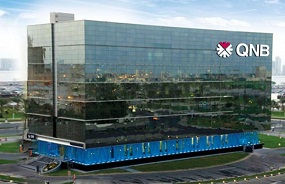The non-hydrocarbon sector in Qatar continues to drive economic growth, supporting the diversification of the economy. Real GDP growth accelerated to 5.7% in Q2 2014, from a revised 5.4% in the previous quarter, according to figures released last Tuesday by the Ministry of Development Planning and Statistics (MDPS). Rapid growth in the non-hydrocarbon sector (11.3%) was spurred by large investments in major infrastructure

projects and by the fast growing population. On the other hand, the hydrocarbon sector declined 2.2% year-on-year as a result of lower crude oil production and temporary gas production shutdowns.
The latest growth figures confirm Qatar’s ongoing rapid process of economic diversification away from its traditional role as a hydrocarbon exporter towards a manufacturing and services hub. Financial, real estate, and business services were the fastest growing sector (16.6% year-on-year in Q2 2014) as banking intermediation accelerated and real estate services were boosted by the demand for housing for the growing population.
Trade, hotels and restaurants also grew strongly (11.1% year-on-year) on the back of the growing population and increased tourist activity. Major infrastructure projects, notably the new metro in Doha, major real estate projects such as Musheireb in the center of old Doha and Lusail to the north, as well as new roads, highways and the further expansion of the new Hamad International Airport, resulted in a 14.5% year-on-year expansion in construction activity. In addition, transportation and communication increased by 11.8% year-on-year, predominantly owing to increased passenger flows through the new airport.
The pickup in growth came despite a significant contraction in the hydrocarbon sector in Q2 2014. This decline reflects a fall in crude oil production and the temporary shutdown of a number of gas plants for maintenance. A moratorium on new projects at Qatar’s largest gas field, the North Field, means that increases in gas production are likely to be limited. In the future, the only gas project expected to add to growth is Barzan, which is only for domestic supply and should add incremental growth to hydrocarbon GDP annually during 2015-23.
The latest GDP numbers are in line with the country’s overall development plan outlined in the National Vision 2030 and the National Development Strategy 2011-16, which aim to diversify the economy away from its dependence on hydrocarbons to achieve more sustainable growth and create jobs. By investing heavily in major non-hydrocarbon projects the authorities are attracting a new wave of expatriate workers to Qatar. This increased level of population growth should boost aggregate domestic consumption and add to non-hydrocarbon GDP growth going forward. As a result, the non-hydrocarbon sector accounted for 49.0% of GDP in Q2 2014, compared with 46.0% a year earlier.
Looking ahead, with strong growth, moderate inflation and high current account surpluses, Qatar’s economic momentum is expected to accelerate further. Large scale infrastructure spending and population growth is expected to drive the expansion in construction, manufacturing and transportation. Strong population growth is also likely to lead to higher aggregate demand for housing, financial, retail and social services. Overall, this growth momentum is leading to a more diversified economy and one of the fastest growing non-hydrocarbon sectors in the world.
Source : Qatar News Agency












